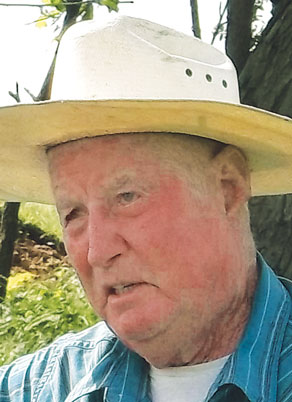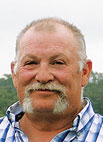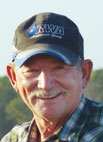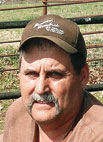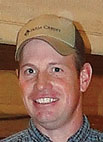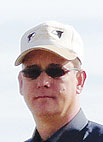Not just Ag in the Classroom
Bobby Doyle and his wife, Jane, own 238 acres in Stilwell, Okla. “I have 100 momma cows and babies, five in service bulls, 24 for sale bulls ready for service in November of this year. I sell nothing but registered Angus bulls,” Mr. Doyle said. He keeps meticulous records for all his cattle. “I don’t release records for any females that I sell. They are all sold as commercial breeders if I sell any at all,” he said. “I’m not such a stickler for bloodline but I am very critical about conformation. I look for a lot of hind quarter. I look for a lot of meat. I want to see a wide top line. I want to see a straight bottom line and straight top line. The only one I sell is one that goes bad or one that does not meet my conformation specifications.
The Commercial Hookup
“It’s a little over 100 miles just to check all of the cattle today.” To say Beechfork Ranch is spread out, is an understatement. Shawn Burgess, Manager, gave Ozarks Farm & Neighbor the lay of the land for their operations, “We have headquarters here in Prim, Ark. We also have land and leases in eastern and southern Cleburne County and several hundred acres in White County. We grow out some replacement heifers down in White County, too. That trip doesn’t count the horse and cattle operations down in Weatherford, Texas, and then we have the herd out in Magdalina, N.M. With only five full time employees here, we stay pretty busy.”
Thriving in the Past and Present
On the to-do list of Gary and Melissa Holland of Gentry, Ark., is checking records to determine if their farm is already a century farm. Gary’s grandfather bought the house and 20 acres around 100 years ago. The house has been home to five generations of Hollands and is currently the residence of Gary’s son and family with Gary living in his own home on the original plot.
A Sustainable Retirement
Planning for retirement entails a financial or lifestyle plan; or it contains both. The desired choice is one that does not involve more years of hard work. The hopeful aspect of retirement is that there will be enough funds to continue the current lifestyle or to make a better one. Retirement takes preparation whether it is through an employment plan or years of saving, reaped of hard work. Most farmers and ranchers know the hard labor and countless hours involved in maintaining a successful operation. Choosing farming or ranching as a retirement choice can be lucrative or ultimately just hard work, or again – it can be both.
Making More Green with Grass-fed
When Bart and Pam Petray met 15 years ago at a two-stepping class, neither had any farming background. Bart was a full-time surveyor and Pam a speech therapist. The couple has two grown children, Megan who lives in Texas with the couple’s two grandchildren and Blake who is joining the Air Force and beginning basic training this summer.
Perfecting the Flock
Weather is always a concern when beginning or managing a farm or ranch. Heat stress, drought, flooding or freezing temperatures can impact the operation of the chosen crop. Grazing options may become limited or in abundance. An exit plan or a Plan B carries the burden when the actual plan begins to fail. Protecting the lifestyle means being in tune with Mother Nature, creating grazing boundaries, providing adequate shelter, maintaining a healthy herd via vaccinations and/or forage and keeping predators out.
Making Strides wtih Brangus
Kenny and Stephanie Kirk are not your typical livestock farmers, meaning that are born and raised with livestock all around them. Rather they were both “townies” and graduated from Springdale High School. However, Kirk was highly involved in FFA and placed second in the state for individual livestock judging. He also worked on farms during high school and looked up to Gene Shockley who had a cow/calf farm and the Parsons family who ran a feeder operation. Kenny said, “The bug bit, and I knew I wanted in.” Kenny knew two things: he wanted to farm and he wanted to live in Madison County.
No Caps on Poultry Potential
Justin and Chana Usrey and their two sons, Kenny, 11, and Darrin, 8, live outside of Huntsville, Ark., where they raise turkeys and a commercial cattle herd. The couple married in 2000 and purchased 78 acres and another 30 later. They also rent an additional 320 acres and are considering expanding that acreage.
Heritage Happenings
Sunflower Heritage Farm in Japton, Ark., is located on 120 acres and home to a wide variety of mostly heritage animals. Patty Stith and her mother, Roberta, and brother, Kenny, began the heritage, conservation-conscious animal farm in 2012. One of their conservation methods includes refurbishing and using old and existing buildings whenever possible. Another is using their animals to clear land naturally by first allowing pasture hogs into unimproved areas to forage and then admitting goats for browsing. Patty said, “That simple process gives you a park.”
Building the Best Black Baldy
Rod and Jamie Garman of Ground Zero Farms in Watts, Okla., run and operate Ground Zero Construction in Siloam Springs, Ark. “We got started with a construction company in 2004. We mainly do dirt work, utilities and build subdivisions,” Rod said. He bought about 350 acres to start his ranch. “As the construction company grew, we just kept buying land around us and own around 1,800 acres now,” he said. Ground Zero Farms also leases another 2,000 acres. “We run about 350 registered Red and Black Hereford cows and about 450 commercial cows,” he added.

